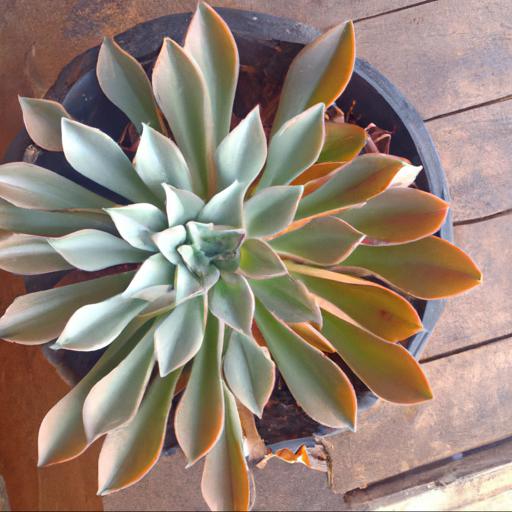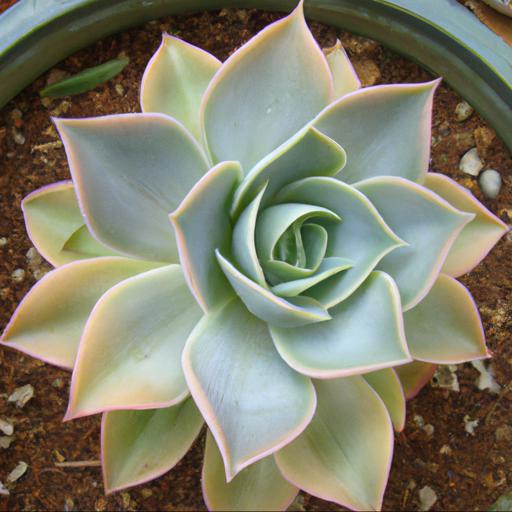Echeveria agavoides is a popular succulent plant native to Mexico. It is easily recognizable by its rosette of fleshy spoon-shaped leaves and its striking colors. This succulent is a great addition to any garden or home, as it is low-maintenance and can thrive in a wide range of conditions.
It is also highly drought tolerant, making it an ideal choice for those living in dry climates. This blog post will discuss the care requirements of Echeveria agavoides, as well as some tips for propagating and displaying this beautiful succulent.
Benefits of growing echeveria agavoides

As a UK garden expert, I can confidently say that Echeveria agavoides is an excellent choice for your garden. This succulent is native to the northern regions of Mexico, and its hardy, easy-care nature has made it a popular choice for many homeowners.
Not only is this succulent easy to maintain and tolerant of both shade and sun, but it also provides a wonderful array of benefits for your garden. One of the most noteworthy benefits of Echeveria agavoides is its evergreen foliage. The rosette-shaped foliage has a large variety of colors ranging from green to rusty orange depending on the temperature, humidity and exposure to sunlight.
This foliage looks great as an accent to any garden, as it provides lasting color and texture. Another advantage of this succulent is its low-maintenance nature. Echeveria agavoides requires minimal pruning, and it is tolerant of both droughts and periods of over-watering.
This makes it an ideal plant for busy gardeners and novice plant owners. Additionally, this succulent is resistant to most pests and diseases, making it a reliable choice for a garden.
Finally, Echeveria agavoides is an excellent choice for people looking for an opportunity to add a touch of elegance to their gardens. The foliage of this succulent is often grown in mounds, which gives it an attractive look that adds a sense of sophistication to any garden. Additionally, due to the varied colors of the foliage, these mounds often provide an interesting contrast in your garden, ensuring that it stands out from your neighbors.
In conclusion, Echeveria agavoides is an ideal succulent for any garden in the UK. With its evergreen foliage, low maintenance nature and ability to add a touch of sophistication, this succulent provides a wealth of benefits to gardeners of all levels.
Tips for growing echeveria agavoides

As one of the most popular succulents to grow indoors, Echeveria agavoides has a lot to offer for gardeners, both in terms of its beauty and ease of care. To get the best out of your Echeveria agavoides, there are some tips that can help you make sure that it thrives and looks its best.
First of all, Echeveria agavoides needs to be put in a warm, bright spot. Direct sunlight is ideal, but bright, indirect lamps can also do the job. The succulent will also grow better if you water it sparingly and infrequently.
If the soil is lightly moist, leave it alone and wait until it begins to dry out before adding more water. Echeveria agavoides can also benefit from occasional applications of fertilizer, at a low dose, as it will help it get essential nutrients with minimal stress.
Finally, you can further boost the growth of your Echeveria agavoides by providing a balanced level of humidity, which is important for all succulents. This can be achieved through regular misting and air circulation, but make sure that the leaves don’t stay soaking wet for long periods of time. By following these tips, your Echeveria agavoides should thrive and bring you delight for many years.
Common problems with echeveria agavoides

Echeveria Agavoides: Common Problems in the UK GardenEcheveria agavoides is an evergreen succulent that is native to Mexico, the Caribbean and parts of Central and South America. This low-growing plant has rosettes of pointed, olive-green leaves that are arranged in a spiral pattern.
It makes for an excellent addition to rock gardens, terrariums and outdoor areas with hot, dry climates. However, there are some common problems associated with this species that those living in the UK should be aware of, since the climate is not ideal for its growth. The first common problem that gardeners in the UK face when it comes to Echeveria agavoides is cold temperatures.
While the plant can survive temperatures that drop to 20F, cold snaps endure longer in the UK, so if the plant is exposed to such low temperatures for an extended amount of time, it may suffer dieback and even death. To help prevent this, it is best to keep the plants in a warm, sheltered spot, such as against a south-facing wall or in an enclosed patio near a southern-facing window. The second common problem that those in the UK are faced when it comes to Echeveria agavoides is its water requirements.
This succulent enjoys dry conditions, so provide adequate airflow and make sure not to overwater it. If the plant is overwatered, it can suffer from root or stem rot, or it may be prone to fungal diseases like powdery mildew.
To help keep the plant healthy, it is best to allow the soil to dry out between waterings and ensure good drainage. Finally, those living in Britain must be careful when it comes to climates that are too hot and sunny. While Echeveria agavoides is drought tolerant, it is not accustomed to constant sun exposure and may suffer sunburn.
If the plant starts exhibiting signs of sunburn, such as discolored leaves or white patches, it is best to move it to a shadier spot to protect it from the blazing heat. Overall, Echeveria agavoides is a lovely succulent to incorporate into UK gardens.
However, it is important to understand the specific requirements and common problems before incorporating it into UK landscapes. By providing the plant with proper protection from cold temperatures, watering it sparingly and keeping it in dappled shade, it is sure to thrive in the UK garden.
Our video recommendation
Final Touch
Echeveria agavoides, or the ‘Lipstick Echeveria’, is a stunning succulent with thick, pointed leaves in shades of green, red and pink. It is native to Mexico and is easy to care for, requiring only occasional watering and full sun. It is perfect for adding a touch of color to any garden.
FAQ
What are the common names for Echeveria agavoides?
The common names for Echeveria agavoides are ‘Giant Hens and Chicks’, ‘Molded Wax Agave’, ‘Molded Wax Echeveria’, and ‘Molded Wax Plant’.
How often should Echeveria agavoides be watered?
Echeveria agavoides should be watered every 1-2 weeks, allowing the soil to dry out between waterings.
What type of soil is best for Echeveria agavoides?
Well-draining, sandy soil is best for Echeveria agavoides.
How much sunlight does Echeveria agavoides need?
Echeveria agavoides needs bright, indirect sunlight for best growth and color.
How can Echeveria agavoides be propagated?
Echeveria agavoides can be propagated by leaf cuttings, offsets, or stem cuttings.
What pests and diseases can affect Echeveria agavoides?
Common pests and diseases that can affect Echeveria agavoides include mealybugs, scale insects, aphids, root rot, and powdery mildew.

